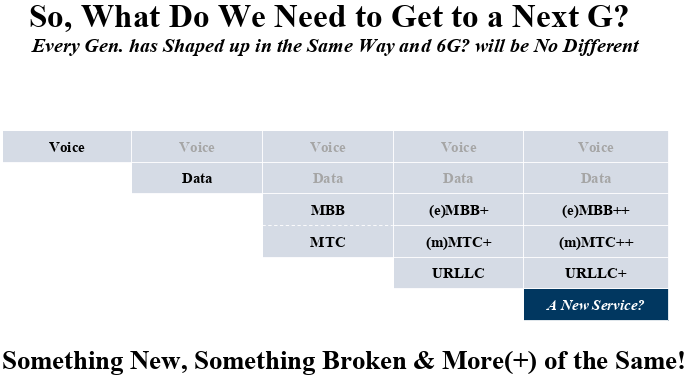Culminating in a video demo of a Large Intelligent Surface (LIS), the What Next for Wireless Infrastructure Summit 2020 painted a comprehensive picture of what’s to come in 5G leading into 6G.
Intelligent Surfaces Take Center Stage
Hosted by the University of Surrey and TelecomTV, the virtual event took place November 11-12. The first day was devoted to “5G Promises” from 2020-26, while the second day looked beyond 2030, firmly into projected 6G territory. In the demo, Lead Academic Mohsen Khalily and his team at the just-launched 6G Innovation Centre at the University of Surrey called it the first such demonstration in the UK, explaining its significance.
“Having good and meaningful coverage is still a big challenge for all network operators, especially in a dense urban environment, where the presence of a large number of buildings and infrastructures gives rise to harsh propagation conditions for electromagnetic waves, leading to lack of seamless connectivity. The major reason behind this issue is a lack of control over the propagation environment,” he said, adding that the LIS can make a passive environment smart by redirecting electromagnetic waves toward the direction of interest.
LIS has several other names. Speaking to 6GWorld in a previous interview, Marco Di Renzo, CNRS Research Director at CentraleSupélec of Paris-Saclay University, referred to them as Reconfigurable Intelligent Surfaces (RIS). Di Renzo talked of a recent NTT Docomo trial and the technology’s potential in urban environments.
“[NTT Docomo] built a transparent surface, basically like glass. When the signals go through the glass, you can control how they are transmitted and how they are refracted,” he said. “So, basically, you can really think of a downtown in a big city with large buildings full of glass and you may replace [it all with] smart glass. That’s [RIS}, and it may really tune the signal without impacting the beauty of the building, because you don’t really realise [they’re] antennas.”
6G Candidate Technologies
Several summit speakers acknowledged LIS over the course of the event. Howard Benn, Vice-President of Communications Research at Samsung Electronics R&D Institute, listed it as one of several candidate technologies for 6G, under the umbrella of antennas as a basic building block of the next generation. Terahertz (and sub-terahertz) was another candidate technology.
“We’re talking 140 GHz up to about 300 GHz frequency band, but, underneath the whole raft of new technologies to make this work, there’s a litany of technologies that are just being developed now. We need to develop now in order to have these commercially available in 10 years’ time. So, those technologies are the basic building blocks, the power amplifiers, a whole raft of stuff including antennas,” he said.
Speaker Paul Crane also referred to Terahertz as a “candidate” technology, preaching restraint. As BT’s Networks Research Director, Crane provided an operator’s perspective on 6G, suggesting it’s hard to characterise a technology as “6G” until “it’s shown what use cases and appropriate costs it can actually work in.”
“We can say… wireless connectivity will be increasingly essential to the digital economy,” he said in a presentation entitled “Do we need another ‘G?’”
“We can say with certainty that new equipment supply-chain players will emerge based on that virtualisation and open architectures and that will drive innovation in the supply chain,” he added.
The Need for Global 6G Standards
Another recurring theme was a need for standards, with Crane arguing 4G’s success was based on global standards and that 5G would follow suit in the same manner. In a separate presentation, Alan Carlton, InterDigital Vice-President of Wireless & Networking Technologies, suggested the standards discussion was on track.
“The standards discussion is still quite a ways away, but the industrial research and consensus-building phase is in full swing, just like it was back in 2010 for 5G,” he said, taking a balanced approach to the situation at hand. He shared Crane’s moderation in tone, but also conceded the likely need for a 6G. He also shared his expectation that the Beyond 5G path will develop in a similar way to the evolution from 4G to 5G, in part through necessity out of growing service requirements.

Carlton highlighted a few key trends, including LIS/ RIS, that could help to complete the 6G vision in his mind. Others included new spectrum bands and sharing models; the fusion of wireless and networking with artificial intelligence; spectral efficiency to energy efficiency; and virtualisation to a full cloud-native model. He said it could conceivably take the entirety of 5G development to work through them all, opening the door to 6G.
“There’s still an awful lot of work to be done in 5G. That said, now is historically the right time to be asking what is next,” he said. “Extreme requirements will continue to push the evolution of wireless well beyond 5G and in time will enable a new service experience. Looking out to the future and the promising trendlines, it does appear that there will be break points in the future that may drive us to develop a next generation 6G technology standard.”







